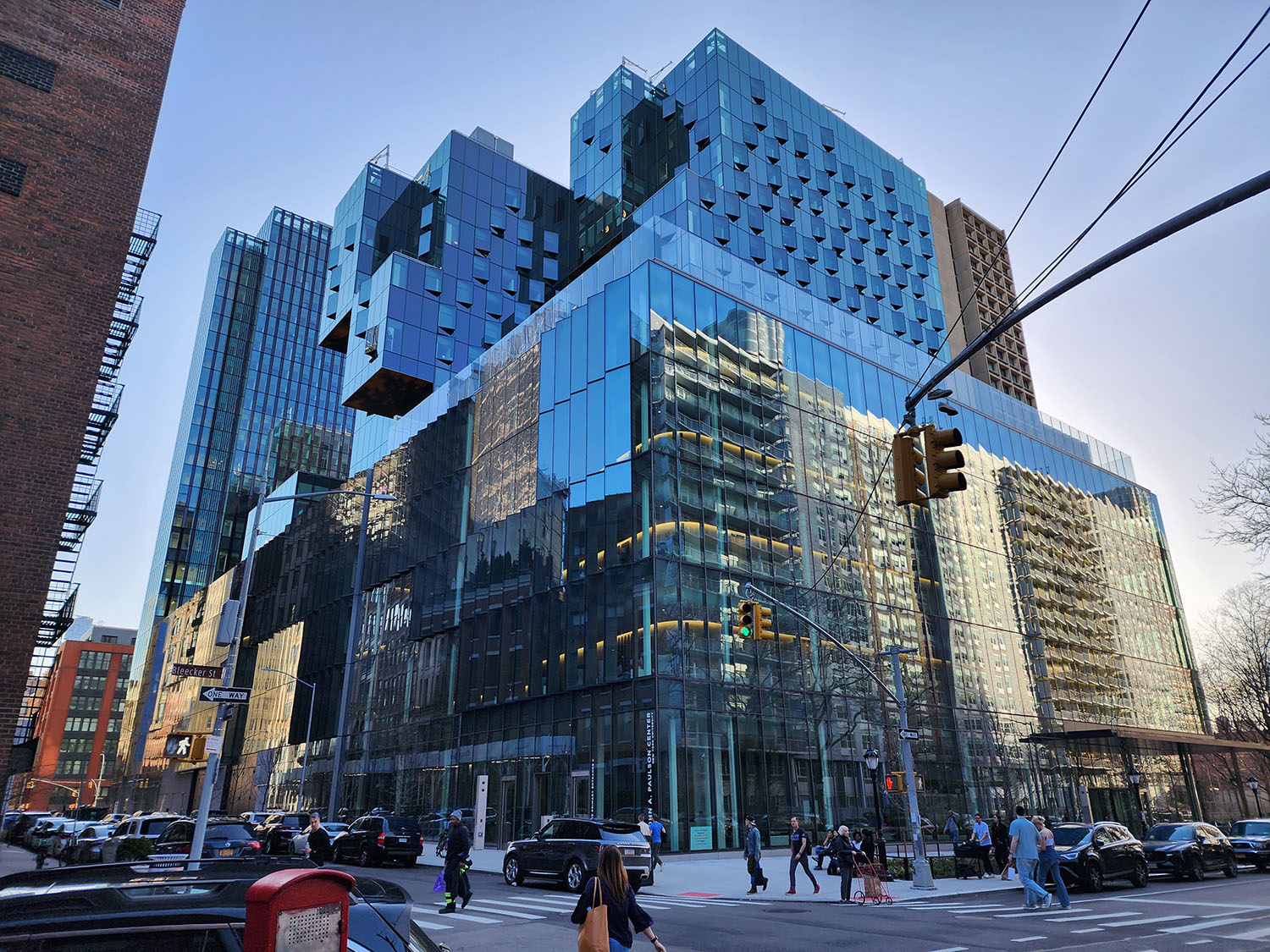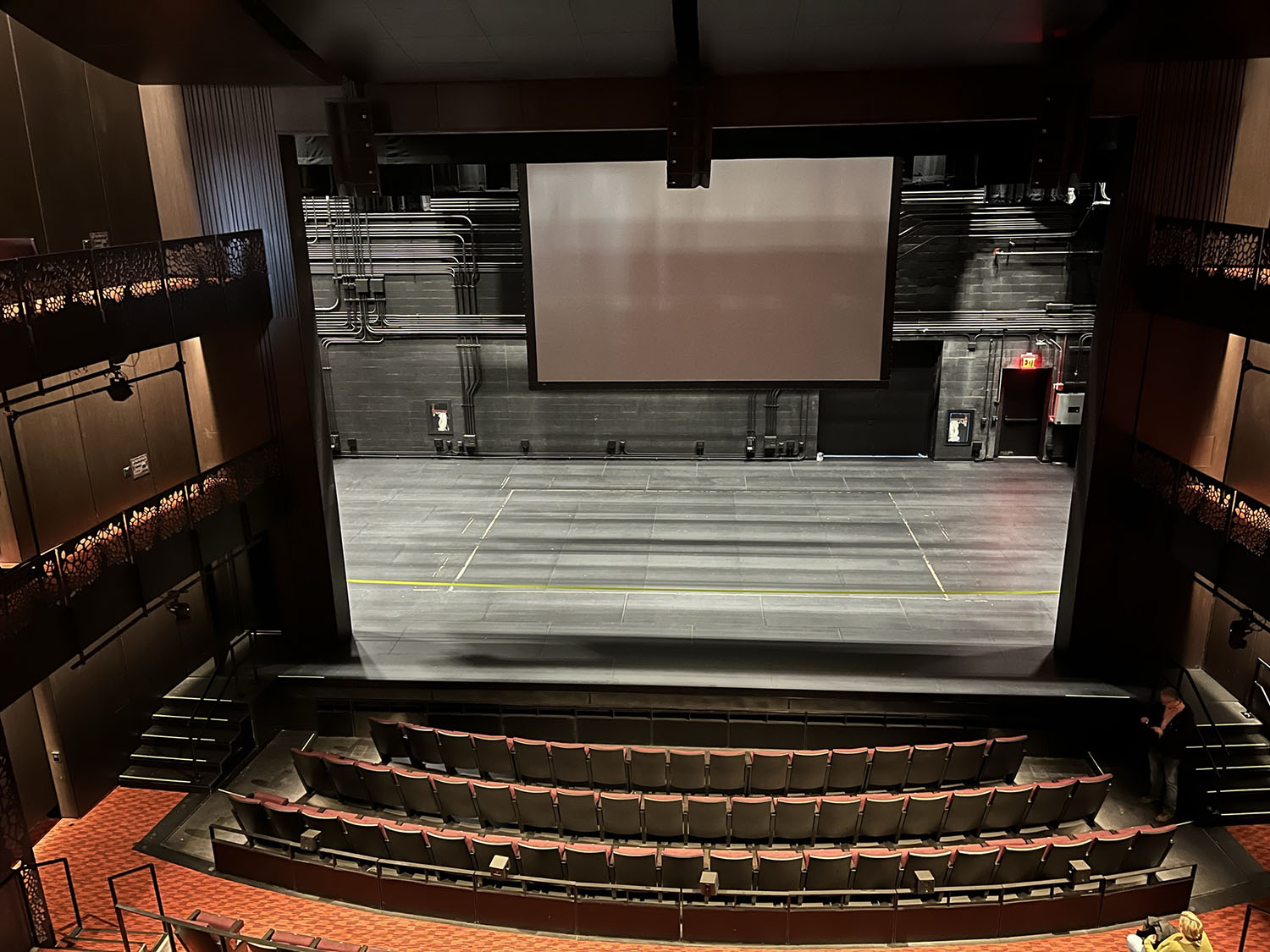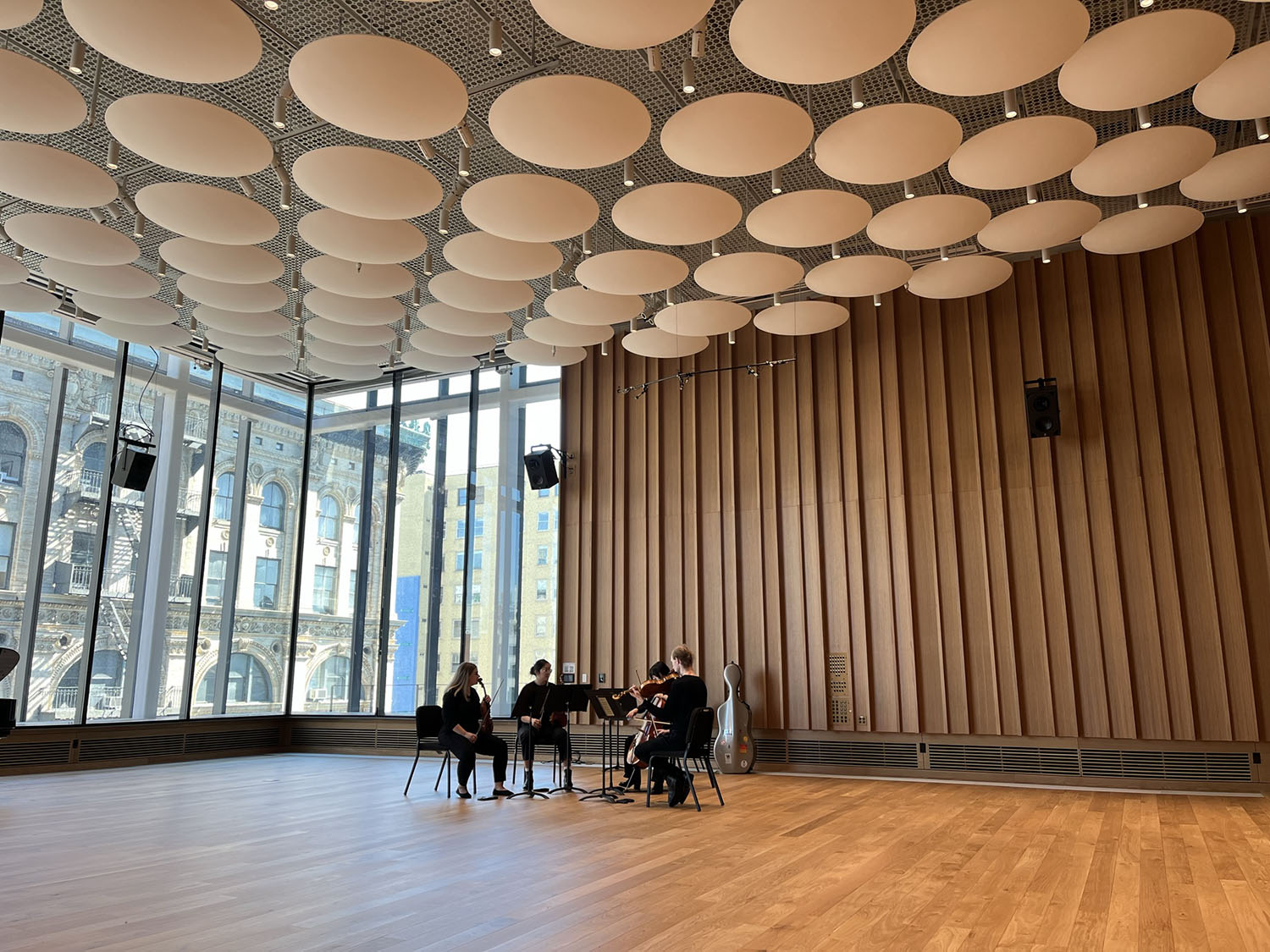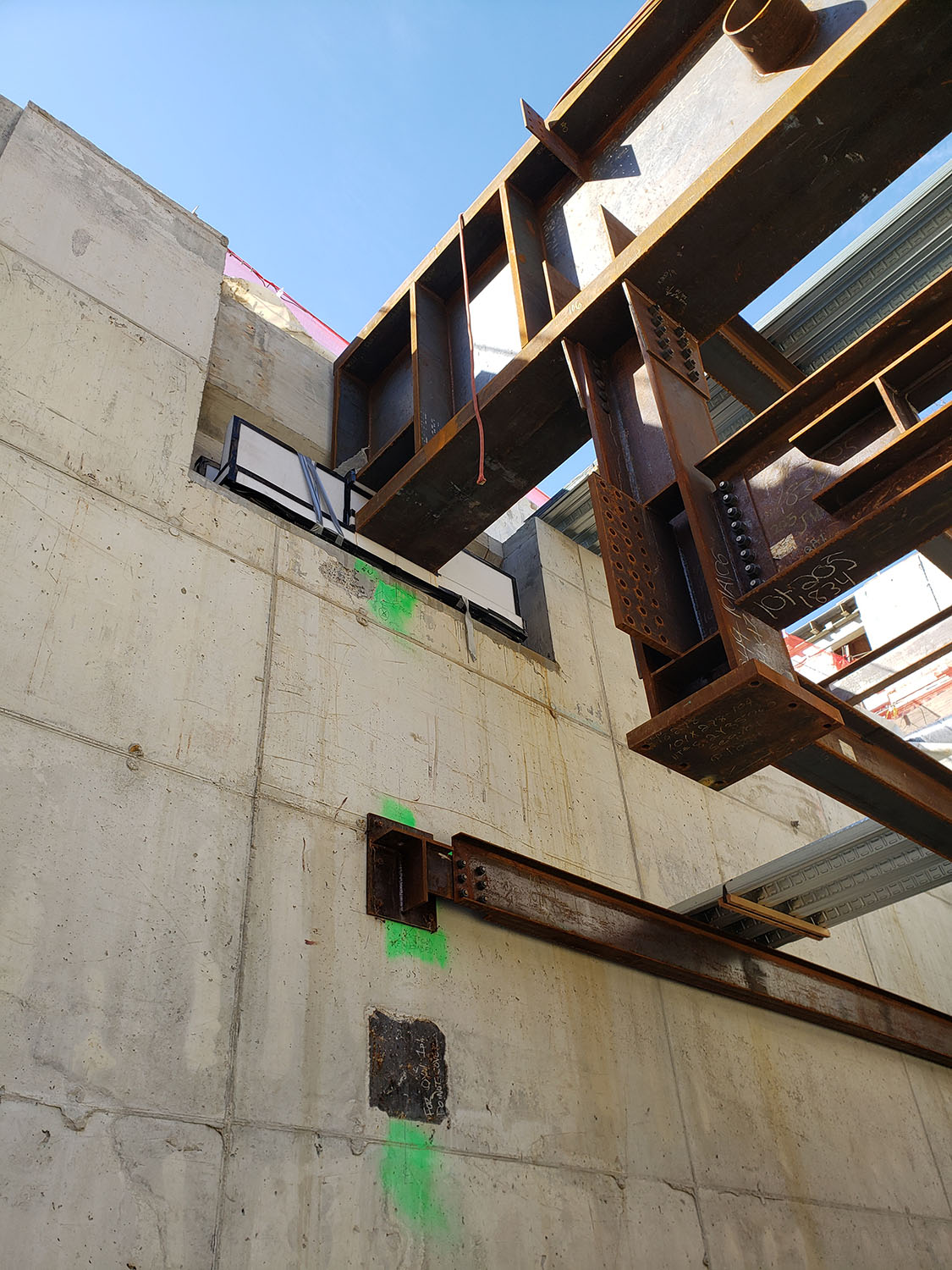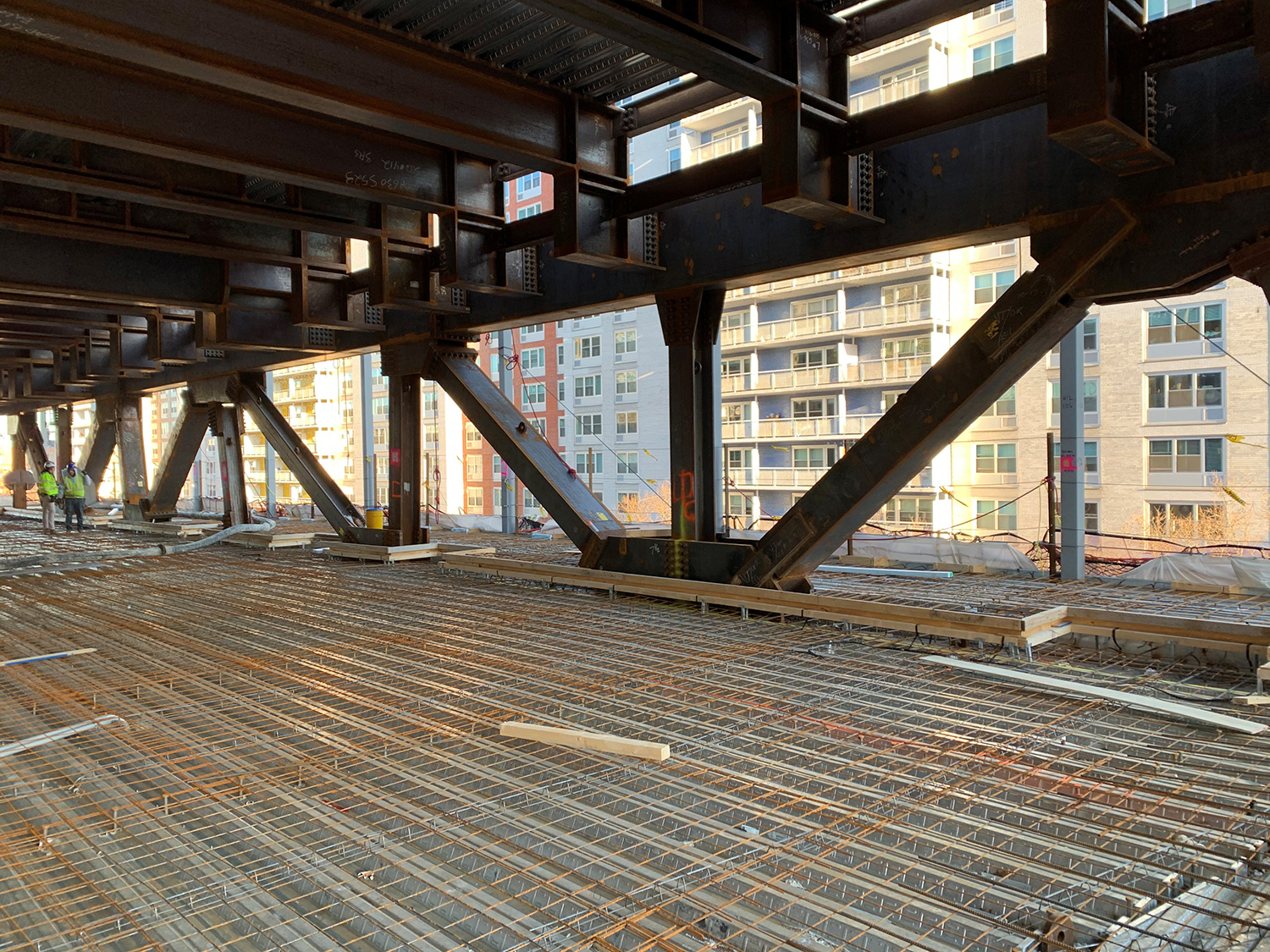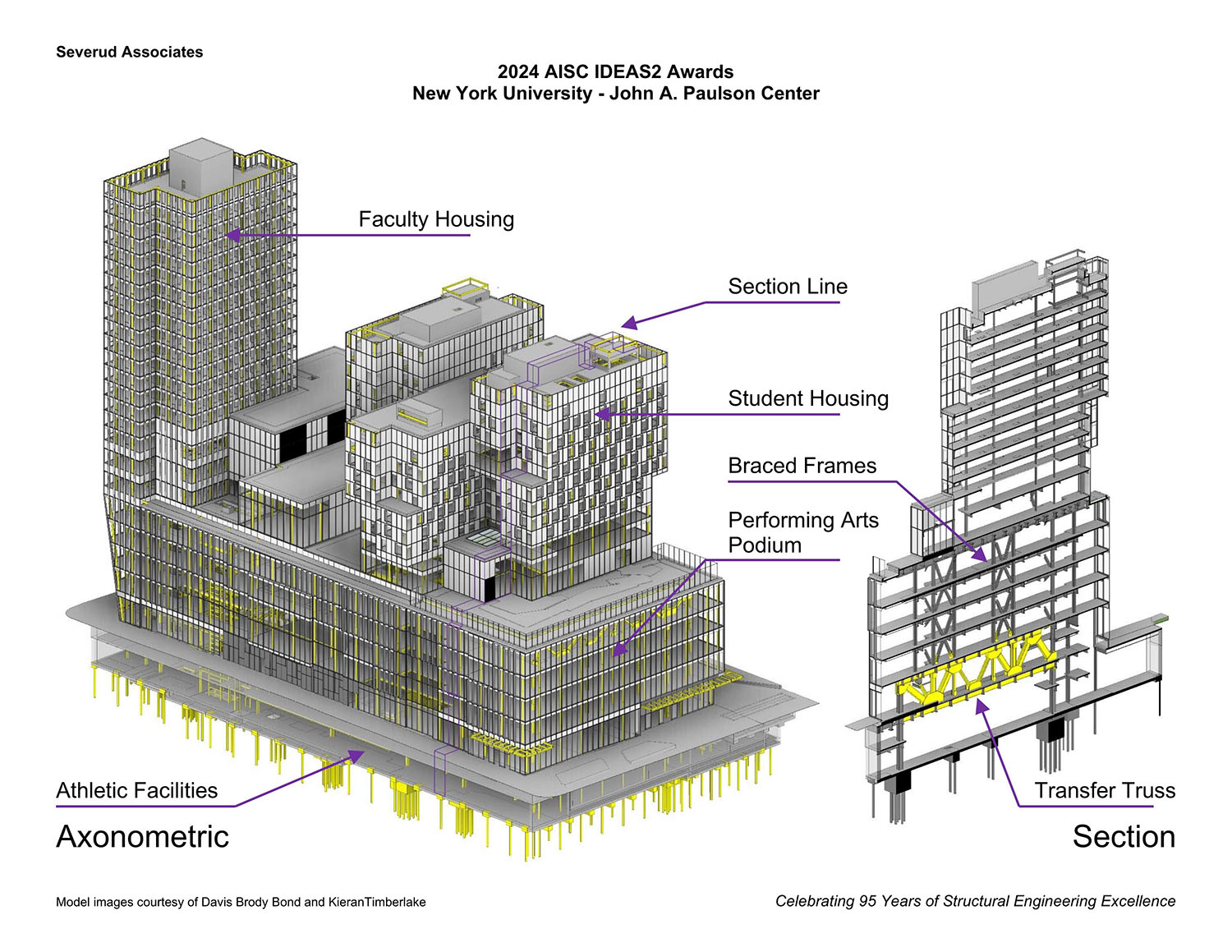AISC
New York University John A. Paulson Center
Excellence in Engineering
"A gymnasium, a swimming pool, and an NCAA-regulation basketball court all probably have no less than an 80- or 90-ft span. Then you sit a 13- or 18-story tower on top of that. It’s really, really difficult in how you transfer the gravity load and how you get the lateral loads. The design could only have been done with structural steel." -- Jay A. Taylor, SE, PE, Hon AIA Sea, Senior Principal (Retired), Magnusson Klemencic Associates, 2024 IDEAS² Awards Judge
New York University's John A. Paulson Center houses a mix of campus spaces rarely, if ever, grouped in one building.
The Paulson Center, which opened in early 2023, combines athletic facilities, classrooms, performing arts spaces, and faculty and student housing in a 735,000 sq. ft steel-framed tower that meets the diverse needs of students, faculty, and neighboring residents. NYU’s location in the population-dense West Village neighborhood mandates a vertical campus, and steel’s long-span potential allows a wide variety of facilities to be housed in one building.
The five-story performing arts podium anchors the building to its entire city block site, where the Jerome S. Coles Sports Center once stood. The building includes a 350-seat proscenium theater, two additional theaters, instruction and practice rooms, and classrooms. Double walls, floating floors, and dropped ceilings acoustically isolate the venues from noise and vibration.
Two below-grade levels house four regulation NCAA basketball courts--including NYU’s new home court--and a six-lane swimming pool. Four floor-deep steel trusses, three at ground level and one at the fifth floor, span 130 ft over the basketball courts to create a 115-ft by 250-ft open space. The trusses transfer columns above and support a hanging running track below with a 25-ft clearance over the courts, which will not interfere with play.
An 18-story faculty housing tower springs from the south end of the podium, while a 13-story dormitory block sits atop the podium’s midsection. Two additional levels of rehearsal rooms fill the space between. The residential structures are framed with conventional structural steel and the Girder-Slab floor system, which combines proprietary steel shapes with precast concrete plank. The system allows speedy erection, reduces dead load, and minimizes construction depth.
The building’s performing arts spaces required extensive vibration and acoustic isolation between the foundation and the southern two-thirds of the ground floor. Beam pockets, column splices, and complex isolation details provide the necessary attenuation at column bases.
The building’s myriad uses occupy architecturally distinct regions, each constructed with an appropriate structural system. A combination of structural steel--including long-span trusses and plate girders--cast-in-place concrete and precast concrete plank supported by proprietary steel shapes minimized the dead load of each component and maximized construction speed.
Take a Load Off
The Paulson Center’s main program elements--the proscenium theater and other performance venues, the basketball courts, and the swimming pool--required large open spaces, and their arrangement mandated many column transfers. Performing arts spaces throughout the podium are located directly beneath the faculty tower and student dormitories, resulting in 80 plate girders at the podium roof.
Most of the podium is transferred on the four floor-deep trusses. Structural steel was the logical choice to carry the accumulated loads efficiently without adding significant dead load.
Truss members are box sections, built up from 4- to 6-in.-thick plate. These sections offer maximum lateral stability and high strength, allowing engineers to minimize material quantities further and effectively control deflections, which were limited to about 1 in. for live load. The trusses’ openness and smaller member sizes also accommodate occupant circulation by allowing doorways through truss panels--especially critical at the high-traffic ground level. Further, the openings inherent to steel trusses facilitated coordination with the extensive mechanical systems in the building.
Dead load reduction, headroom, and speed of erection were drivers for selecting the Girder-Slab system and structural steel for the residential structures. Conventional wisdom would dictate concrete flat plates, which was considered, but its greater dead load would have increased demands on the transfer system and taken longer to construct.
The proprietary steel tee shapes were combined with conventional structural steel and hollow-core precast concrete plank and kept dead load to a minimum while allowing a faster construction schedule. The tee shapes also help maintain a uniform soffit and reduced floor-to-floor heights.
One of the podium’s program and sustainability features is the circulation corridor at the perimeter of each floor, which promotes connectivity between the building’s occupants and city residents on the street and provides natural light and passive solar heating. A necessary consequence of the corridors is that students, faculty, and staff spend a lot of time near the exterior walls.
Engineers and architects designed perimeter columns using architecturally exposed hollow structural sections (HSS)--typically HSS14×14 and spaced at 20 ft--fireproofed with intumescent paint. At stair openings, HSS beams supplemented the spandrel framing. Similarly, HSS12×8 exterior columns were used at the residential towers.
Stacking Uses
Stacking the Paulson Center’s mixed uses on top of each other was a pivotal piece of the building design and engineering: The residential towers sit atop the performing arts podium, which bears over the below-grade athletic facilities. None of the tower columns and a few interior podium columns extend continuously to the foundation. In fact, there are over 220 column transfers in the building, including the four long-span trusses and 80 plate girders at the podium roof.
The extensive column transfers meant the loads on the columns reaching the foundation were much higher than expected for a building of this size. As a result, high-capacity caissons were drilled to reach and socket into bedrock. Temporary caissons were installed to provide support for the transfer trusses during erection.
The high groundwater elevation at the site necessitated that the caisson-supported perimeter walls and cellar slab be designed as a waterproofed “bathtub” to resist lateral earth pressure and hydrostatic uplift. Consequently, the caissons supporting the slab under the basketball courts are also designed for tension.
The swimming pool and basketball courts prevented extension of much of the lateral bracing directly to the foundation. Instead, loads from the podium were transferred to the perimeter walls at ground level using horizontal steel trusses and concrete diaphragms. That transfer approach increased loads in the ground floor framing and complicated the slab reinforcement and connection designs, especially at the numerous changes in slab elevation.
The podium’s centerpiece is the proscenium theater. The podium structure, which also includes additional performance spaces, music instruction and practice rooms, and classrooms, is framed in steel, with concrete fill on metal deck floors. Massive double walls, raised floating floors, and specially detailed dropped ceilings further acoustically isolate the venues from noise and vibration transmitted through the framing from the athletic facilities.
Prescriptive building code lateral requirements do not explicitly address the building’s multi-tower configuration. Therefore, wind tunnel testing was conducted to determine appropriate load patterns, and a seismic response spectrum analysis captured the response of the complex structure. The lateral force resisting system includes a combination of braced and moment-resisting frames. Horizontal trusses at the podium roof transfer lateral loads from the towers to lines of bracing surrounding the large open spaces of the theaters.
Acoustic isolators between the foundation and the steel framing of the southern two-thirds of the structure attenuate vibrations and noise from subway trains and vehicle traffic. At column bases, layers of polyurethane material are between the top of the caisson cap and base plate and around the pressure slab opening. The same material sits between the base plate and plate washer at each anchor rod, and the assemblage is covered with a cap. Finally, the base plate was grouted and the pocket filled with concrete to create a rigid base for stability and load transfer that would not transmit undesirable vibrations. A similar detail was used at beam pockets.
The column base detail was modified to account for shear transfer where lateral bracing extends to the cellar level. A wide flange steel lug was welded to the underside of the column base plate, which was set into a recess in the caisson cap lined with a similar polyurethane material.
The lateral load transfer at the ground level to avoid the athletic facilities resulted in higher-than-usual shears between the diaphragms and foundation walls. The structural engineers devised an innovative interlocking “sawtooth” connection of the floor slab to the foundation walls—intermittent projections of the underside of the slab cast into wall pockets lined with a polyurethane material--to maintain acoustic isolation.
The combination of the sawtooth slab, beam pocket and column base isolation details, and isolation of column splices in some locations allow the entire superstructure to carry the necessary gravity and lateral loads without creating a path through the framing for unwanted vibrations.
Careful coordination between the architect, structural engineer, and MEP consultant maximized the number of floors--and their ceiling heights--that could be built in the available space. An extensive number of large beam and plate girder openings allowed most of the ductwork, conduits, and piping to occupy the same space as the structural framing. Strategically locating the columns at the tower-podium roof interface reduced demands on the plate girders and trusses, which further facilitated accommodation of the mechanical systems while giving the architects the high ceilings they desired.
The orientation of individual elements became critical to limit transfers and minimize loads. For instance, the natural alignment for the swimming pool is longitudinal to the building, while the proscenium theater needed to be across the building’s width. Both are located at the same end of the building. The team finessed the specific location of each so that they formed a cruciform shape in projection. Engineers located continuous columns at each of the reentrant corners of the cross.
The four floor-deep trusses and many braced frames provided aesthetic possibilities for the architects. In several locations, the vertical and diagonal members become sculptural elements within a room or are expressed in the wall finishes. The compact size of the members--made possible by using steel box sections at the trusses--gave the architects greater flexibility in choosing the extent and appearance of the expression.
The architectural and client requirements led to extremely tight clearances, which impacted column dimensions, beam and slab depths, and mechanical clearances in the ceilings. Consequently, the structural engineers had to push the bounds of certain materials to optimize the design. The results emphasize the importance of teamwork and coordination between design disciplines and construction trades. Due to the design team’s collective efforts, the building delivers NYU’s extensive programmatic requirements in a shorter building height than the initial design.
The Girder-Slab system was considered in the early design phase as an option to reduce the floor-to-floor height in the residential towers and increase the number of floors. The building’s engineers worked with their counterparts at Girder-Slab to determine appropriate system components and criteria for the corresponding conventional structural steel elements to achieve the fullest benefit. The resulting floor heights are 10 ft at the student dormitories and 9½ ft at the faculty housing tower.
Early in the steel detailing process, the steel contractor developed a modification to the column base isolation detail. The isolation material was applied to the underside and perimeter of the base plate in the shop, after which a steel leveling plate on the bottom and closure plates around the sides were adhered to form a box. That process allowed the entire base isolation assembly to be prefabricated.
On site, the base-isolated columns could be erected in the same manner as a standard column. Once installed, the column bases were grouted in the typical manner, using access holes through the base plate sandwich. The modified detail eliminated the need for additional field labor and helped speed up erection of the steel frame.
The structural engineer worked closely with the steel contractor during the shop drawing phase to supply detailed shear and moment values along the length of each plate girder, which gave the contractor freedom to tailor the flange and web plate thicknesses, widths, and welding to minimize material and labor while still providing the required strength and stiffness.
Sustainable Thinking
The Paulson Center will contribute to NYU’s goal to achieve carbon neutrality by 2040 and is expected to achieve LEED Gold certification. Materials from demolition and construction waste were recycled, and the structural steel framing contains over 90% recycled material.
The building is connected to NYU’s existing co-generation plant for heating, cooling, and dehumidification, which minimizes its consumption of fuel and potable water. Extensive high-performance glazing--also designed to minimize bird collisions--and the location of circulation corridors at the building’s perimeter facilitate passive solar heating in winter, reduce heat gain in summer, and provide year-round natural lighting.
More than 25,000 sq. ft of terraces and green roofs provide natural cooling, capture rainwater for reuse in a 135,000-gallon tank, and reduce the building’s heat island effect. The outdoor spaces also promote biodiversity and improve occupant health.
Owner: New York University, New York
General contractor: Turner Construction Company, New York
Architects: Davis Brody Bond, New York; KieranTimberlake, Philadelphia
Structural engineer: Severud Associates Consulting Engineers, PC, New York
Fabricator and erector: W&W | AFCO Steel, Oklahoma City *AISC full member; AISC-Certified fabricator and erector*
- Location: New York, NY
- Submitting Firm: Severud Associates Consulting Engineers, PC
- Photo Credit: 1-4, 6, 8 - Severud Associates; 5 - Davis Brody Bond; 7 - Davis Brody Bond and KieranTimberlake

